AMD AM1 Kabini Part 2: Athlon 5350/5150 and Sempron 3850/2650 Tested
by Ian Cutress on May 29, 2014 2:00 PM ESTSynthetic IGP Benchmarks
Unity – Graphic Scene 720p: link
As part of my IGP testing I went searching for a couple of new Unity based benchmarks to help decipher the line between the desktop graphics solutions and those that are not so great. First up is a graphical humdinger, implementing a complex scene with lighting effects (including fluid simulation, shadows, SSAO, Bloom). We run the benchmark at 720p with the highest graphical settings, reporting the average FPS.
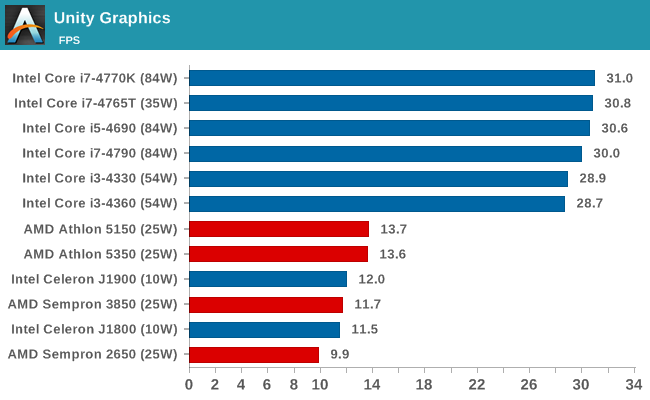
Unity – Draw Calls: link
Next up is a benchmark limited by draw calls rather than rendering complexity. The scene generates simple Nintendo Gamecube polygons that fall due to gravity and bounce around until stationary. The scene continuously spews out these polygons until three consecutive frames fall under a 20 FPS average. We run the benchmark at 720p at simple graphic settings to minimize the graphical complexity, and take the average of several runs.
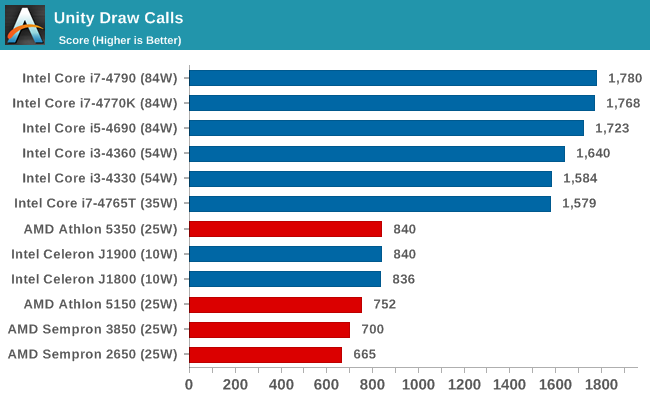
3DMark
The synthetic tools from Futuremark have been on the benchmarking landscape for over a decade, with each generation designed to tackle new problems as either the CPUs or GPUs become too powerful. Here we test 3DMark 06, 3DMark 11 (Performance), the latest 3DMark and 3DMark Vantage’s pixel/texel tests.
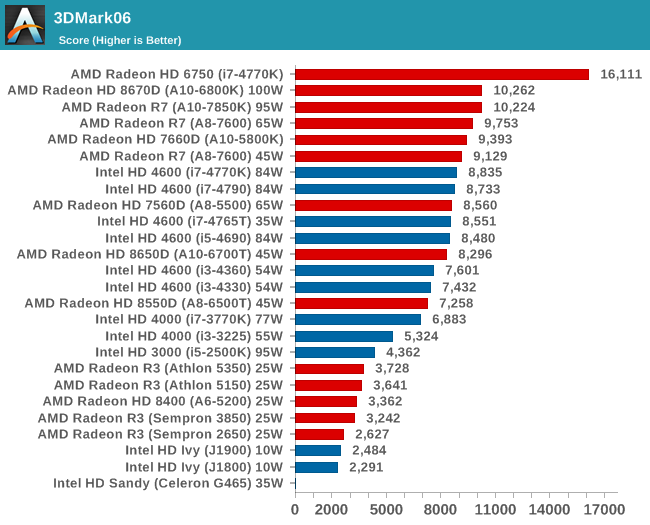
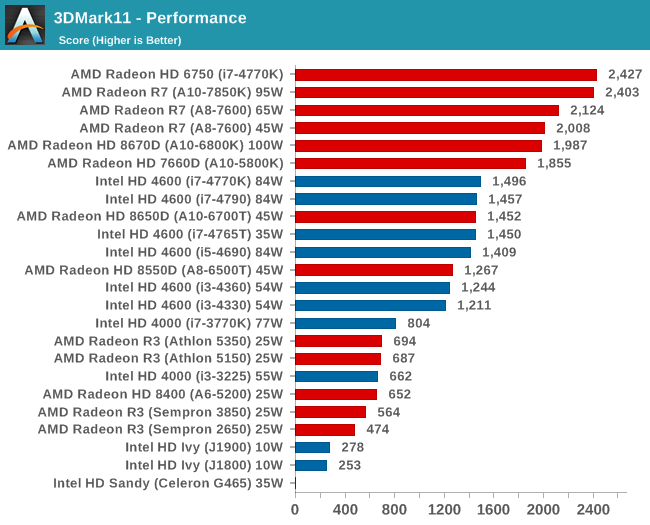
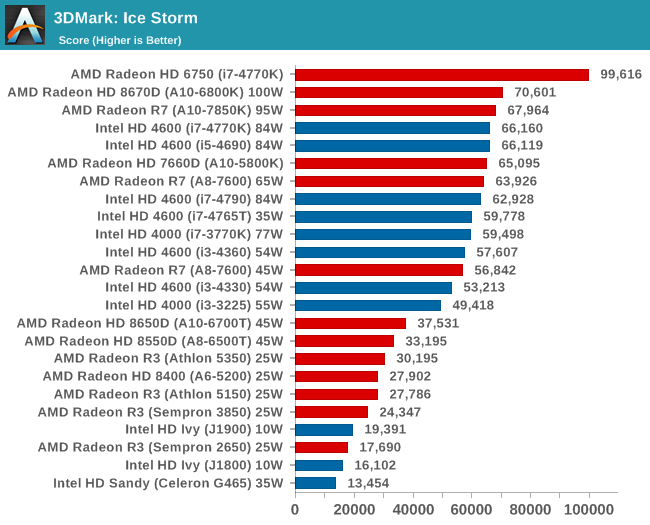

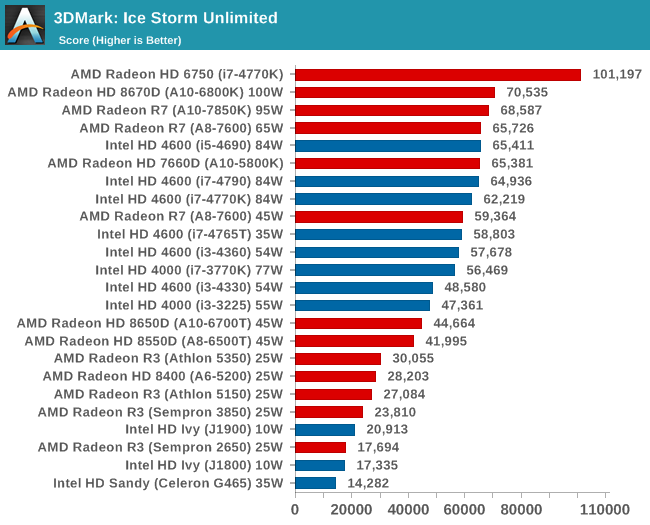
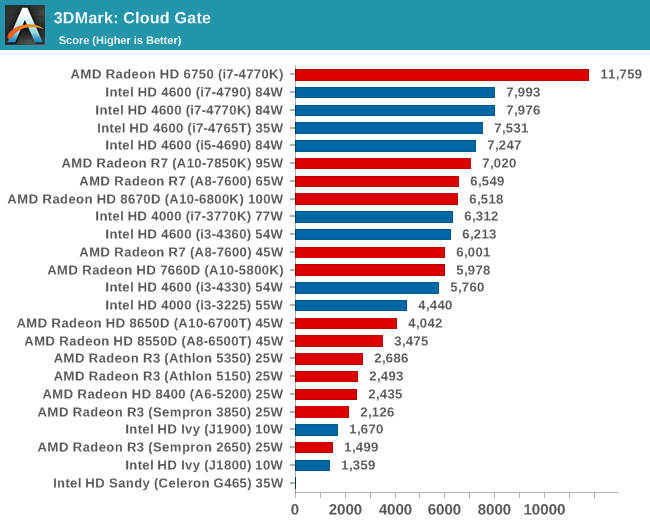
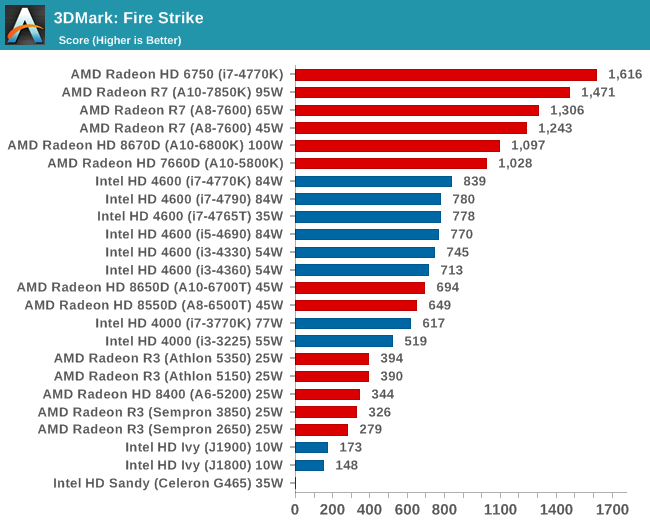

Tessmark
The latest version of TessMark is designed to focus on tessellation via OpenGL 4. We run the latest version of the benchmark using the high resolution map set at maximum tessellation while 1080p full screen, reporting the average FPS.
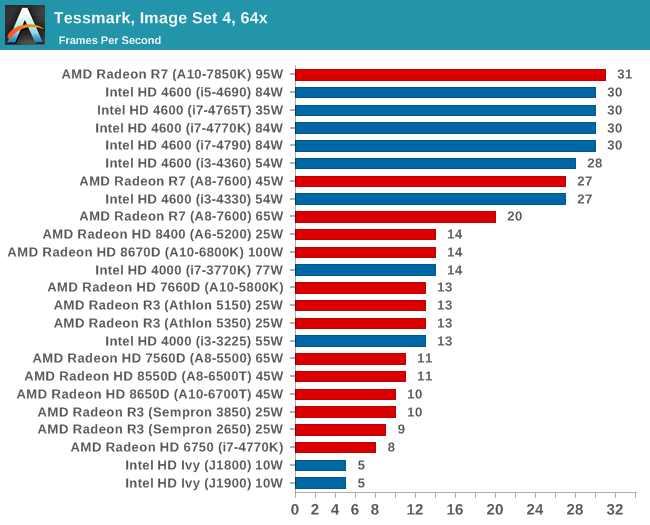










87 Comments
View All Comments
haardrr - Saturday, May 31, 2014 - link
but the i7-4675t is a 35 watt processor... does that mean that the i7-4675t competes with the 5350?Namisecond - Monday, June 9, 2014 - link
They are a lot closer in power usage than you might think, both idle and loaded.BMNify - Saturday, May 31, 2014 - link
why would you use a dual core anything to day ! , and these chips do not have AVX simd so are underpowered before you even start in 2014/15BMNify - Saturday, May 31, 2014 - link
also unless you are a large org looking to finally do mass signage in bulk then again these chips/soc are not worth it to day, if you want a few web enabled apps per Soc device then look to the http://cdn.liliputing.com/wp-content/uploads/2014/... for instance , now that will be worth the cash for something you want to actually buy on a whimhttp://liliputing.com/2014/05/crowdfunding-2-incre...
Crowdfunding: 3 incredibly tiny PC modules starting at just $15
silverblue - Saturday, May 31, 2014 - link
If you're including Kabini in that statement, the Jaguar architecture does indeed support AVX. In fact, it supports pretty much everything Piledriver does.BMNify - Saturday, May 31, 2014 - link
i wasn't, but again why settle for only old AVX , when you can have AVX2 AND a free hardware encoder and decoder that works for when you just want a quick conversion (or to make a new correctly time coded V/A fixed rate) http://forum.doom9.org/showthread.php?t=162442 Intel QuickSync Decoder - HW accelerated FFDShow decoder with video processing before you do the real x264 high visual quality encodeAlexey291 - Monday, June 2, 2014 - link
Why wouldn't you?The fewer the number of cores required to deliver equivalent performance the better.
Besides dual core cpu's are perfect for certain very real world applications - such as for example me typing out this message on a chromebook sporting a dual core haswell celeron.
eanazag - Tuesday, June 3, 2014 - link
Agree. I was looking for a cheap Haswell Pentium. Maybe you can compare in the bench.DanNeely - Thursday, May 29, 2014 - link
The graphs in this article leave a lot to be desired. The huge number of high power/performance chips only add clutter; at most 2 or 3 representative examples from each major vendor would suffice to show these processors are very low end performing. Alternately, use the color coding not to call out AMD vs Intel; but to highlight the 4 AMD chips being reviewed along the with the J1800/1900 celerons they're nominally competing with.Ian Cutress - Thursday, May 29, 2014 - link
I'll duplicate the graphs (after I eat dinner!) and limit the results data within a narrow band, and offer the option to switch between both.